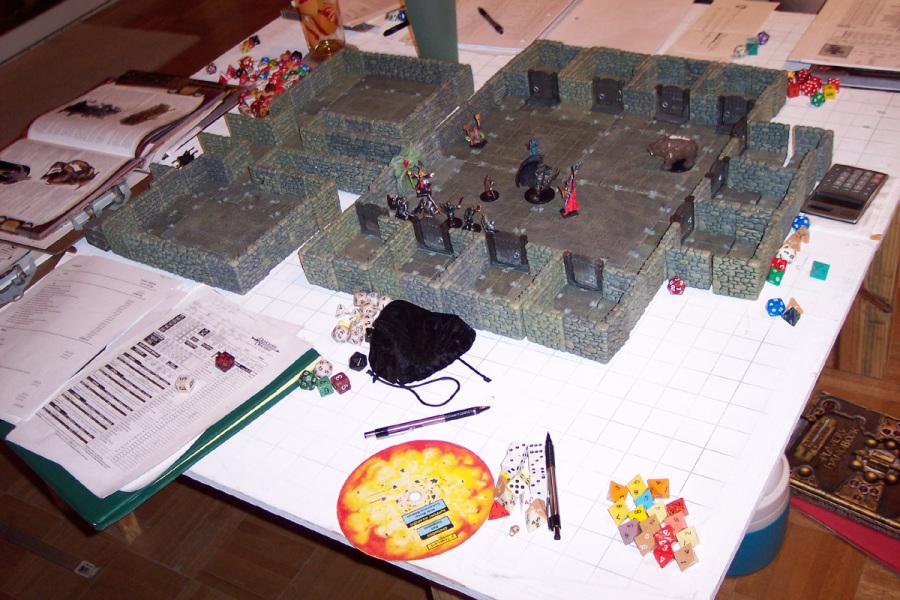Dungeons & Dragons: 40 Years and Going Strong
Photo courtesy of creativecommons.org
Dungeons & Dragons
November 5, 2014
While it may seem irrelevant now, the role-playing game “Dungeons & Dragons” has a rich history which goes all the way back to 1974. Despite new mediums of entertainment, this seemingly primitive game still remains. One can’t accidentally save over your character in the game, and it is physically impossible to play without some form of social interaction, so D&D still has some appeal. With the recent release of the fifth edition of the game, Dungeons and Dragons has become even more prevalent.
D&D goes all the way back to 1974, when two people, Dave Arneson and Gary Gygax (now deceased) created the game. It was then published by the company TSR (Tactical Studies Rules) which is now WOTC (Wizards of The Coast). All in all, there are six editions of the game. The first edition was published in 1974. The second edition, known as AD&D, was released between 1989 and 1993. This period began what is known as “the golden age of D&D”, drawing in rivers of new players, and sparking the creation of new worlds of burning deserts and frozen tundras, all born within the imaginations of new people. Then came the third edition in 2000, the revised third edition in 2003, and the fourth edition in 2008, all of which were created by the new company that had taken over the franchise. These editions were overburdened with complex rule systems, and the fourth edition split the fandom down the middle over the argument on which aspects of the game were more important. By now, many people who played D&D had already left to play a new version of the game called “Pathfinder” made by a different company. Now there is an “edition war” where all fans of the game are playing different editions and are highly divided on the merits of each one. This year, WOTC plans to change that with the release of the fifth edition, though its quality is yet to be put into question.
D&D has had its fair share of controversy. When it was first released, Christian groups led by Pat Robertson began a “moral panic,” accusing the game of espousing devil worship, the occult, witchcraft, suicide, and murder. Many sensationalized (and often untrue) stories of murder and suicide have been blamed on the game, most notably that of James Dallas Egbert III, a Michigan University student who was claimed to have entered the University’s steam tunnels after playing the game. Chris Pritchard, who had murdered his stepfather, was also a fan of the game.
Eventually the game’s commercial success led to a series of embittered lawsuits between the two creators, which culminated in Gygax’s decision to sell his ownership interest in the company in 1985.
D&D is a cultural phenomenon. It still lasts today, and many celebrities (Stephen Colbert, Tim Duncan, Vin Diesel, and Robin Williams) have admitted to playing it at some point in their lives. It has been the subject of countless magazines, spoof films, novels, television programs, forums, and more. Hobby stores across the country sell items and rulebooks related to the game. It has been seen in popular shows like Futurama, or the cult-favorite Community. D&D is a game both rich in history and limitless in scope. It has left a mark on popular culture, and has created memories among people for years to come. Best of all, it is an excuse for any person to find some friends, escape from reality, and let their imagination run wild.













